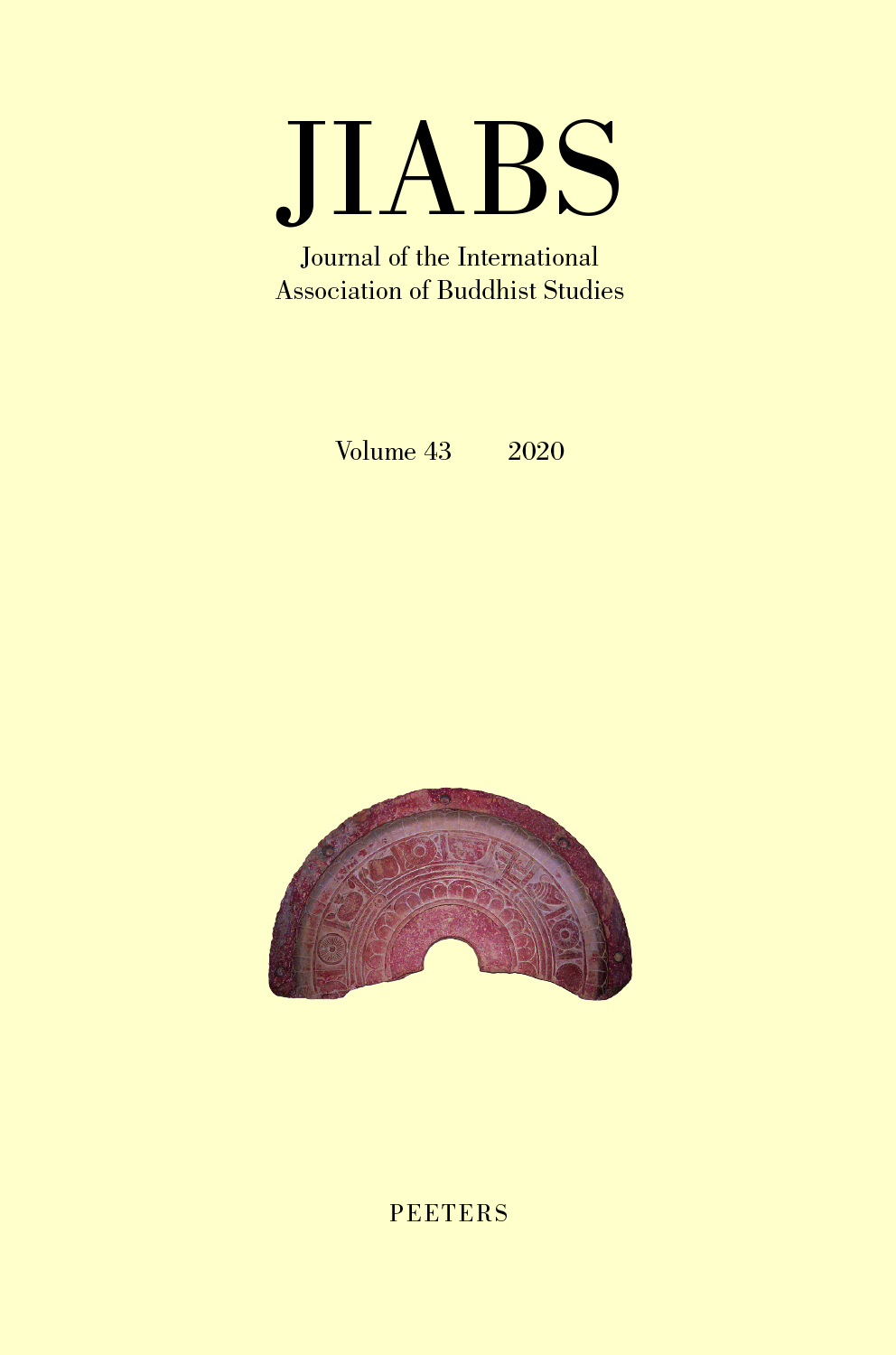 previous article in this issue previous article in this issue | next article in this issue  |

Preview first page |
Document Details : Title: A Self-Aggrandizing Vehicle Subtitle: Tathāgatagarbha, tīrthikas, and the True Self Author(s): JONES, C.V. Journal: Journal of the International Association of Buddhist Studies Volume: 39 Date: 2016 Pages: 115-170 DOI: 10.2143/JIABS.39.0.3200524 Abstract : This article concerns the Indian tathāgatagarbha literature: Mahāyānist works, produced no later than the early fifth century, which assert that all sentient beings possess already the qualities of a Buddha. Early works of this tradition – perhaps even the earliest that are available to us – explain possession of the tathāgatagarbha to constitute the existence of the self (ātman). These sources, foremost the Mahāparinirvāṇa-mahāsūtra, show evidence that their authors faced strong opposition from audiences committed to the more conventional Buddhist doctrine of anātman, but contend defensively that the ātman that they teach is nothing like any notion of selfhood found in non-Buddhist religious traditions. With reference to two of these 'ātmavādin' tathāgatagarbha works, I present evidence that authors of this tradition used the idea of a Buddhist doctrine of the self to undermine non-Buddhist accounts of liberation: not only describing them as deficient, but as having been created (nirmita) by the Buddha himself. Such claims expand the boundaries of the Buddha’s sphere of influence, after the description of his activities found in the Saddharmapuṇḍarīkasūtra: a clear influence upon these tathāgatagarbha sources. Other Mahāyānist literature of an 'ekayānist' orientation used this strategy also: i.e. that any teaching regarding liberation from saṃsāra finds its origin in the activities of Buddhas and bodhisattvas, but has its definitive expression in the Buddhist dharma. The tathāgatagarbha presented as a Buddhist doctrine of the self can hence be understood as a complement to a certain understanding of the Mahāyāna, here the archetype of all paths that claim to deliver an end to saṃsāra, and to an account of the Buddha as the architect of all ostensibly non-Buddhist accounts of liberation. |
 |


